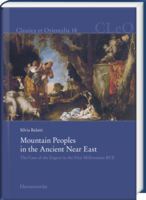|
|
more titles of the subject:
Download:
Please note: With adding digital Products to your cart
the payment will be handled via PayPal. The download will be provided after the payment is confirmed. Since Prehistory, communities principally engaged in herding activities have occupied the intermontane valleys and plains of the Zagros (Western Iran). Relations, tensions and cultural exchange between the inhabitants of the mountains and the Mesopotamian plains already occurred during the Bronze Age. These contacts increased in the course of the 1st millennium BCE, as is suggested by Near Eastern and subsequently by Greek and Latin sources which provide us with numerous new names of peoples living in the Zagros. The present volume investigates the social organisation and life style of the peoples of the Zagros Mountains in the 1st millennium BCE and deals with their relationships with the surrounding environment and with the political authorities on the plains.
Among these peoples, for example, were the ‘fierce’ Medes, breeders and purveyors of fine horses, the Manneans, who inhabited a large territory enclosed between the two contending powers of Assyria and Urartu, and the ‘warlike’ Cosseans, who bravely attempted to resist the attack of Alexander the Great’s army. The Southern Zagros Mountains, inhabited by mixed groups of Elamite and Iranian farmers and pastoralists, were also of key importance as the home of the Persians and the core area of their empire. Starting from Fars, the Persians were able to build up the largest empire in the history of the ancient Near East before Alexander. The interdisciplinary approach adopted in this study, which juxtaposes historical records with archaeological, zooarchaeological, palaeobotanical and ethnographic data, provides a new, holistic and multifaceted view on an otherwise little-known topic in ancient history. |
|||||||||||||||||||||||||||||||||||||||






